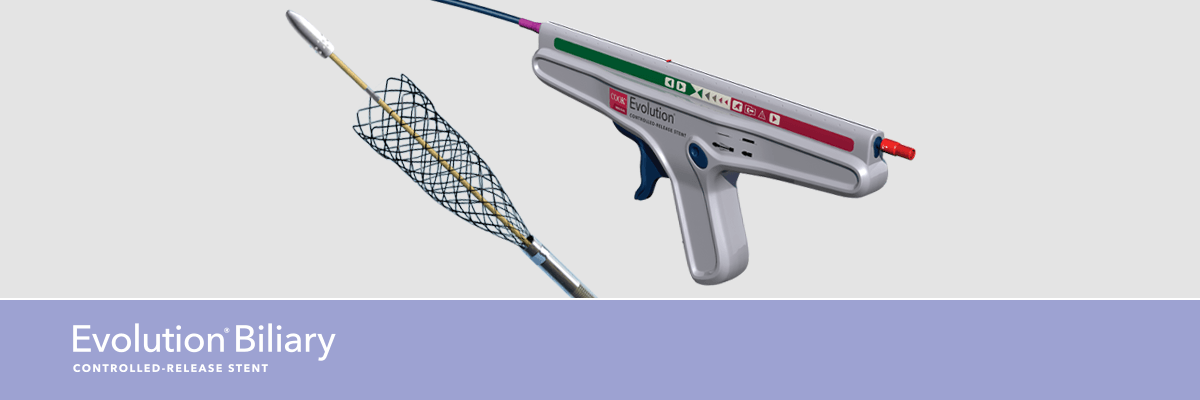A newly designed uncovered biliary stent for palliation of malignant obstruction: results of a prospective study
This recently published study evaluates the performance characteristics of the Evolution® Biliary Stent System – Uncovered for the palliation of malignant biliary obstruction. The full clinical article is open access and available online here.
Key findings
“The primary study endpoint, clinical success, defined as freedom from symptomatic recurrent biliary obstruction (within the stent) requiring re-intervention, was achieved in 108 of 113 patients (95.6, 95%CI = 90.0–98.6%) at study exit for each patient.”
“Technical success [defined as ‘successful delivery and placement of a stent at its intended location’] was achieved in 112/113 patients (99.1%, CI 95% = 95.1–100.0%), and in 119/120 stent placements (99.2%).”
Secondary endpoints
“Ease of stent deployment was rated as ‘easy’ (53/120) or ‘very easy’ (57/120) in the majority of cases (91.7%). The deployment of 3 stents, placed in 2 patients, was rated as ‘difficult’ (1/120, 0.8%) or ‘very difficult’ (2/120, 1.7%). […] In all 3 cases deployment was successful.”
“Fluoroscopic visualization of the SEMS was rated as ‘easy’ (n = 25) or ‘very easy’ (n = 87) for 112 stents (93.3%).”
“Stent recapture was required during 6 deployments (5.0, 95%CI = 1.9–10.6%); 1 stent was recaptured twice. Recapture was rated as ‘very easy’ in all cases and the stents were successfully deployed.”
“Only two patients (1.8, 95%CI = 0.4–10.1%) had device-related adverse events, which were classified by the physician as probably or definitely related to the device deployment. In both cases, the device-related adverse event resulted in biliary obstruction requiring re-intervention before 6 months’ time.”
“There were no cases of post-procedure stent migration or stent-related perforation. There were a total of 38 deaths over the course of the study. None of these deaths were stent-related.”
The study concludes that the product “appears to be effective at relieving biliary obstruction and preventing re-intervention within 6 months of insertion in the overwhelming majority of patients. The device has an excellent safety profile, and possess[es] a high technical success rate during deployment in a variety of types of biliary strictures.”

